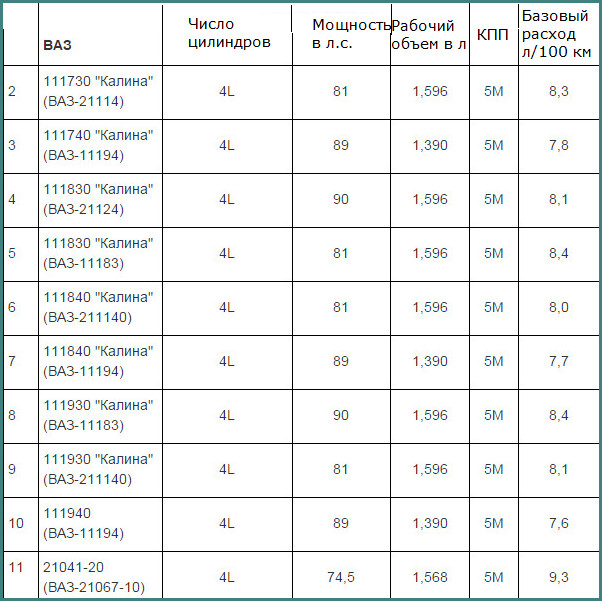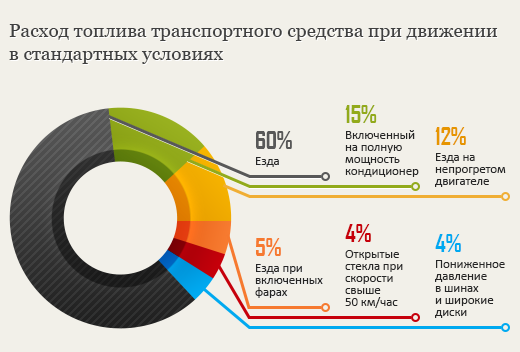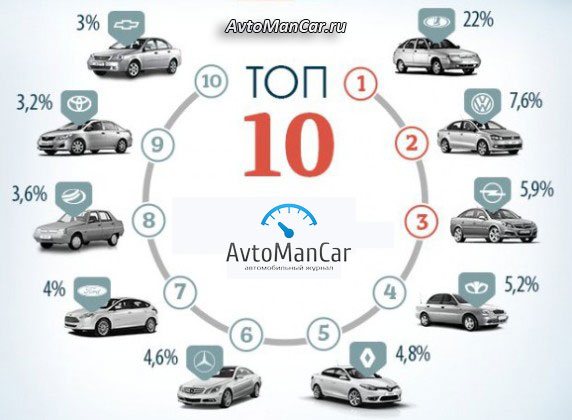
Gasoline consumption per 100 km calculate
Any driver is interested in the question - how many liters of gasoline "eats" his car. Reading the characteristics of a particular model, we see the fuel consumption, which shows how much gasoline the engine needs to drive 100 kilometers in the urban or extra-urban cycle, as well as the arithmetic average of these values - the fuel consumption in the combined cycle.
Nominal and actual fuel consumption may differ, usually not very significantly. Fuel consumption is affected by the following factors:
- the technical condition of the car - while the engine is being run-in, it consumes more fuel, then the consumption level decreases to the rate specified in the instructions, and increases again as it wears out;
- driving style is an individual value for each individual person;
- weather conditions - in winter the engine consumes more fuel, in summer - less;
- use of additional energy consumers;
- aerodynamics - with open windows, aerodynamic properties decrease, air resistance increases, respectively, and more gasoline is needed; aerodynamic properties can be improved by installing spoilers, streamlined elements.

It is unlikely that you will be able to calculate the exact, standard values of fuel consumption, up to a milliliter, but it is very easy to calculate the approximate consumption for different driving conditions, you don’t need to be a great mathematician for this, it’s enough to remember the mathematics course for the third or fourth grades and know that such proportions.
The calculation formula used by the flow calculators is very simple:
- division is divided by mileage and multiplied by one hundred - l / km * 100.
Give an example
Let's take the now popular Chevrolet Lacetti model with an engine capacity of 1.8 liters. The volume of the fuel tank is 60 liters. When driving in different cycles, this amount of fuel was enough for us for approximately 715 kilometers. We believe:
- 60/715 = 0,084;
- 0,084 * 100 = 8,4 liters per hundred km.
Thus, the consumption in the combined cycle for our specific example was 8,4 liters. Although according to the instructions, the consumption in the combined cycle should be 7,5 liters, the manufacturer does not take into account that somewhere we had to crawl in a toffee for half an hour, and somewhere to carry passengers with their luggage, and so on.

If we want to know how much our car “eats” gasoline per 100 km of a suburban or urban cycle, then we can fill a full tank and drive exclusively around the city, or wave to the south, for example, to the Crimea, and in the same way carry out simple mathematical calculations. Do not forget to write down the odometer data at the time of pouring gasoline into the tank.
There is another way to calculate the approximate consumption - fill in a full tank of gasoline, measure a hundred kilometers, and again go to the gas station - how much you had to add to a full tank, this is your consumption.
With a simple mathematical operation, you can calculate how many kilometers you can drive on one liter of gasoline. For our Lacetti example, this would look like this:
- we divide the mileage by the volume of the tank - 715/60 \u11,92d XNUMX.
That is, on one liter we will be able to travel approximately 12 kilometers. Accordingly, this value multiplied by the volume of the tank will tell us how much we can drive on a full tank of gasoline - 12 * 60 = 720 km.
As you can see, there is absolutely nothing complicated, but you need to remember that its consumption also depends on the quality of gasoline, so you need to refuel only at proven gas stations, where fuel quality can be guaranteed.
Loading…

